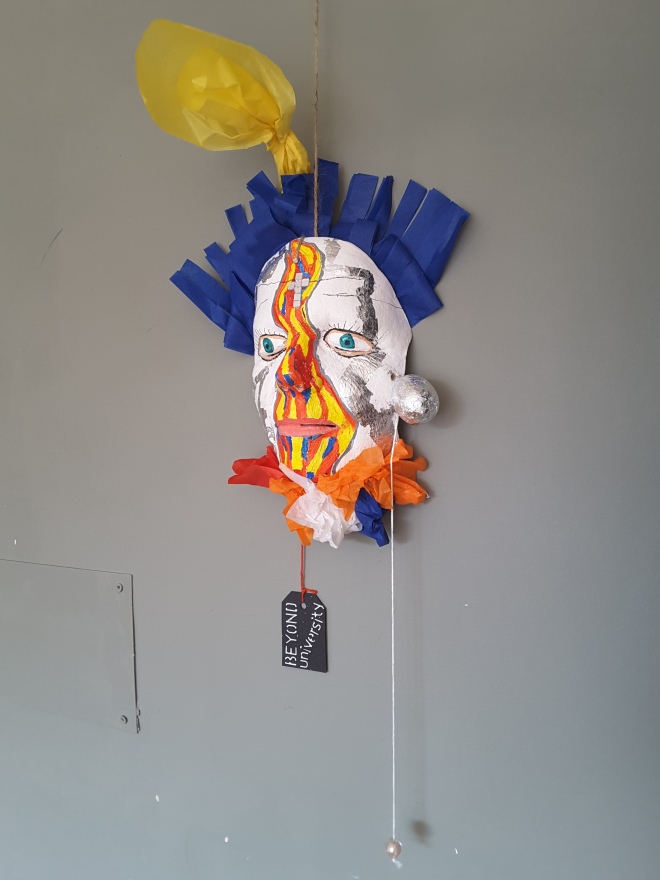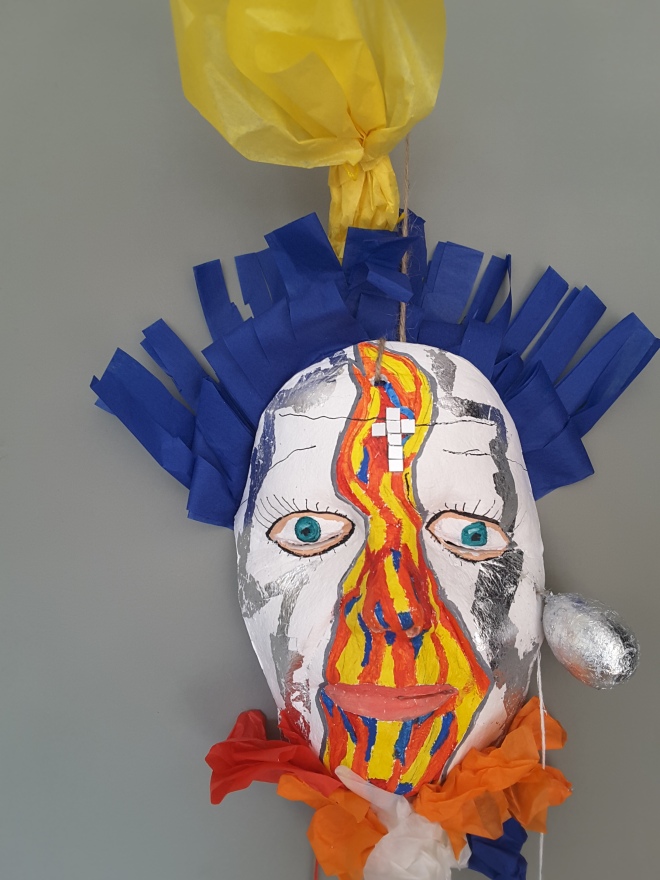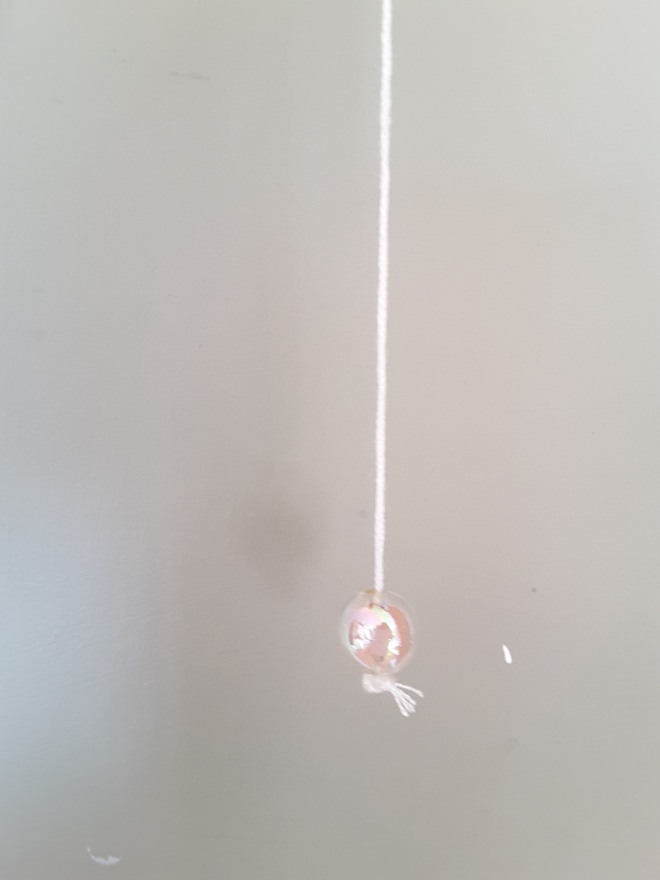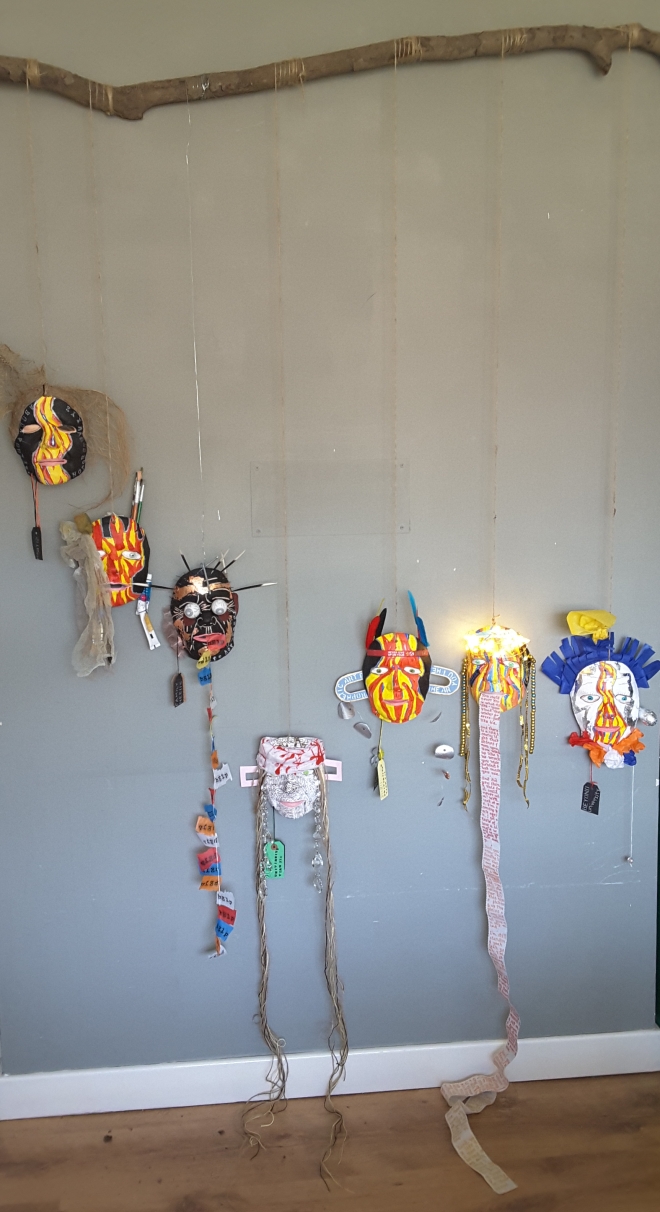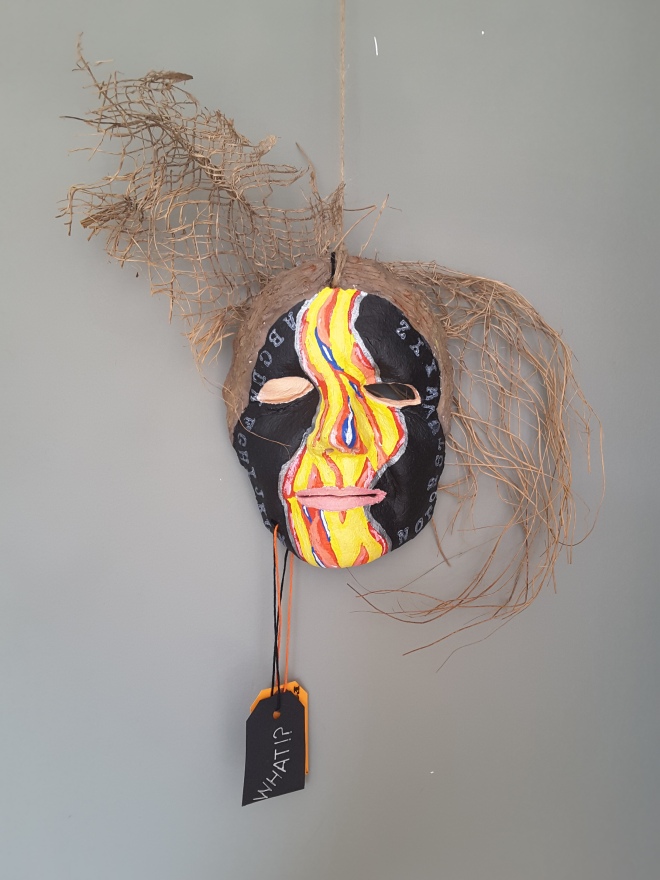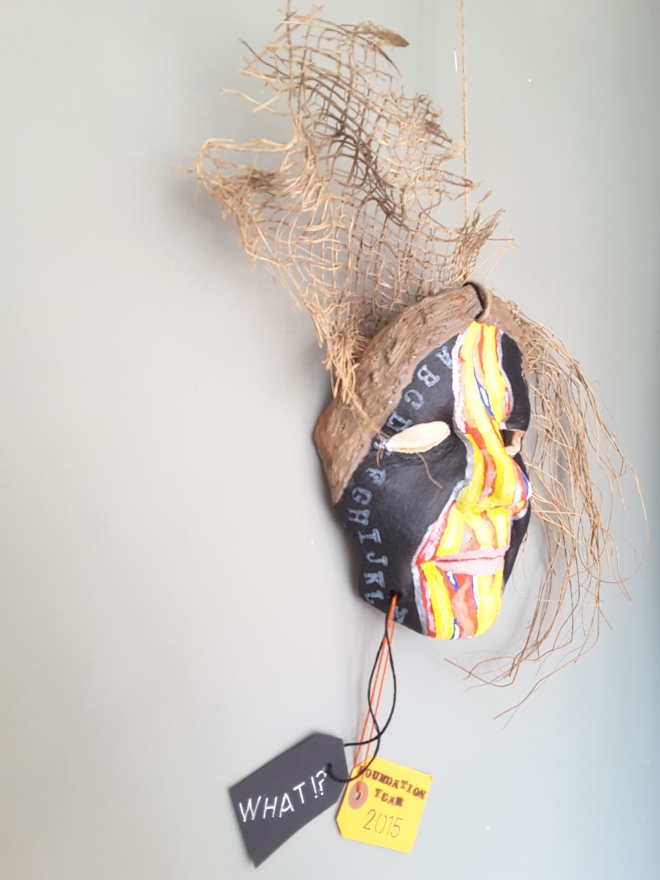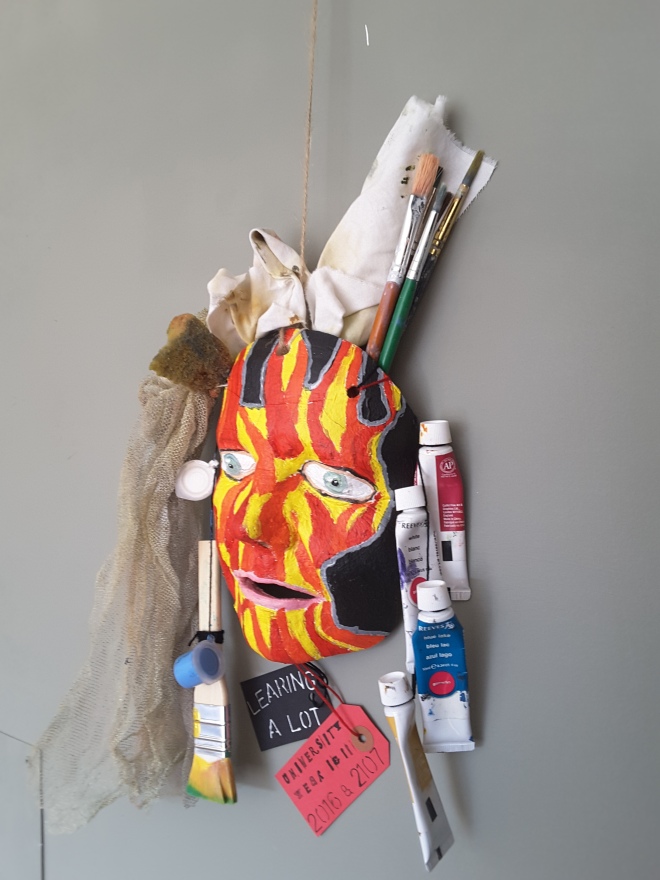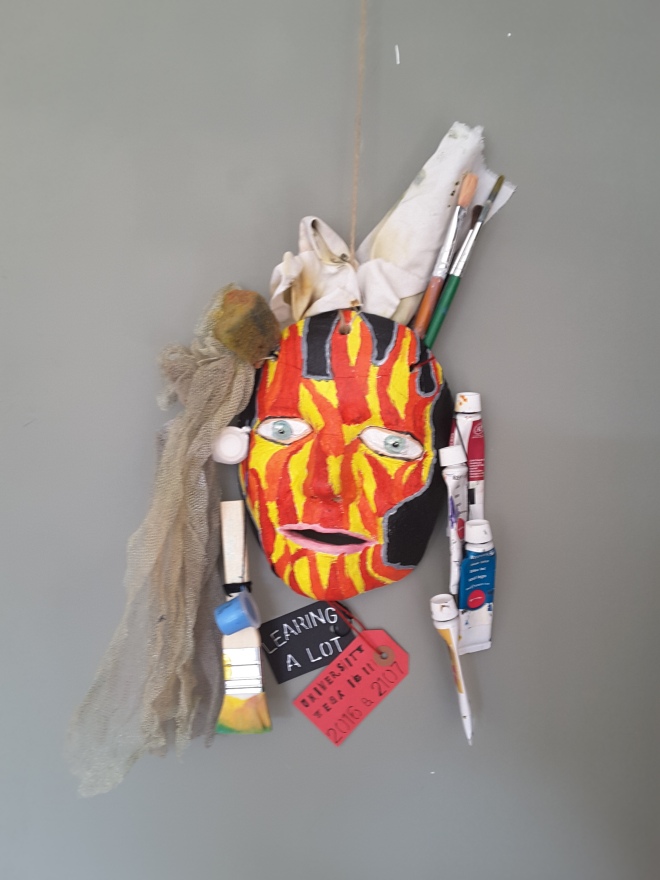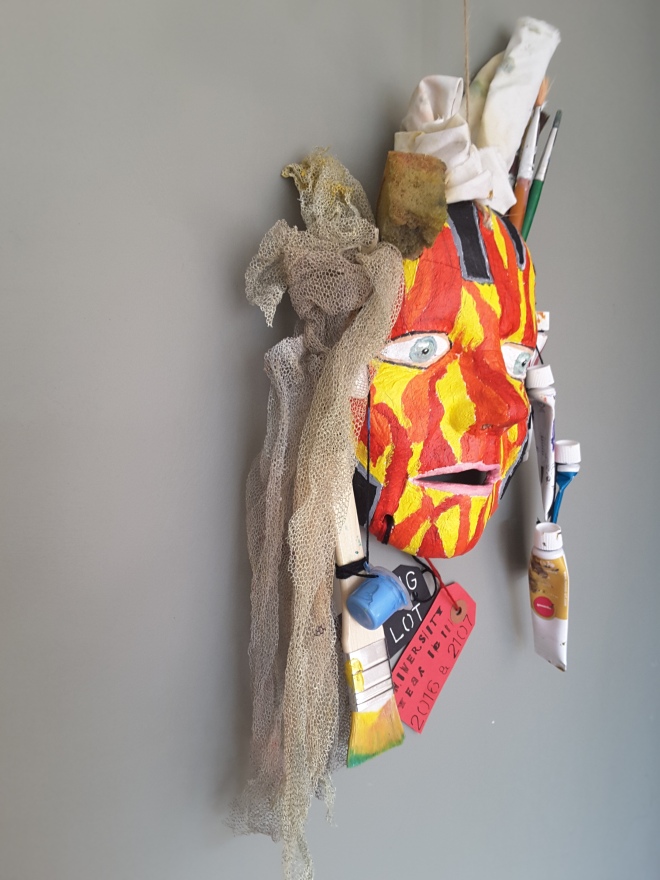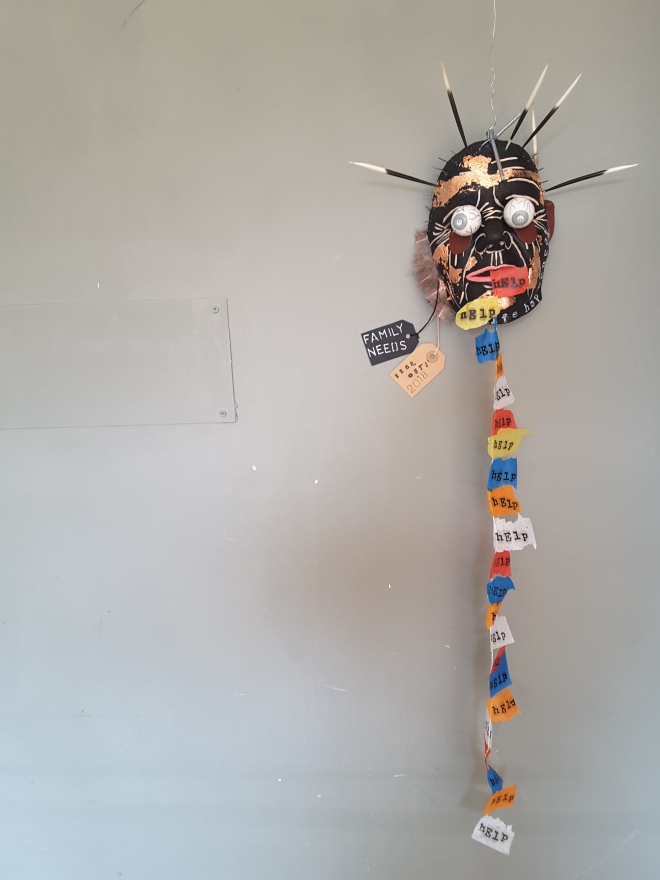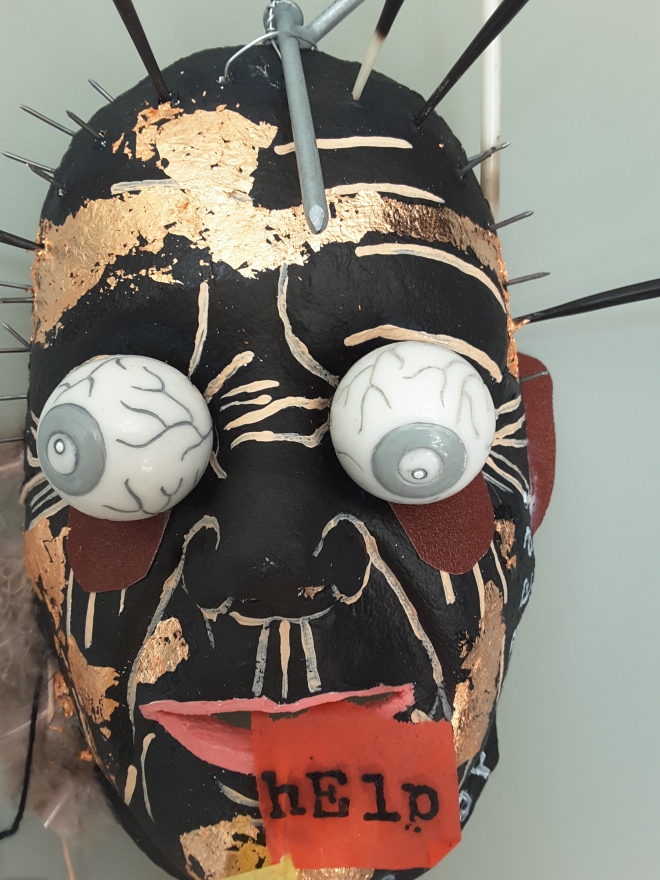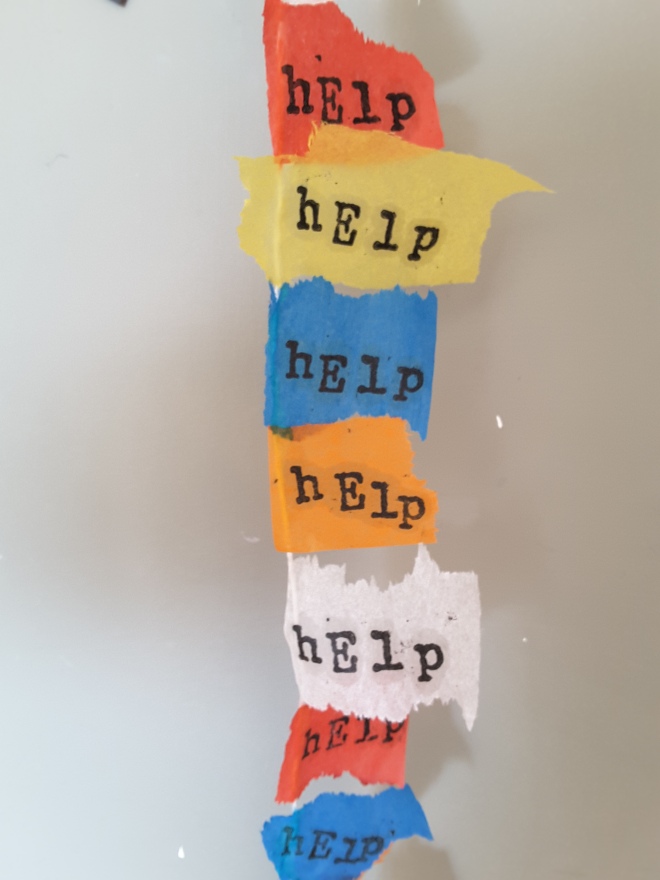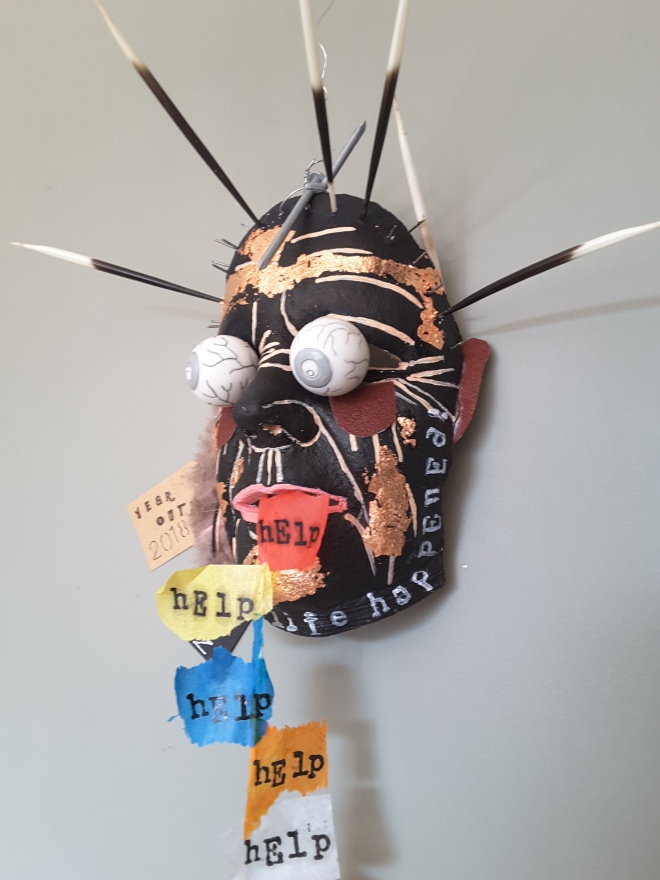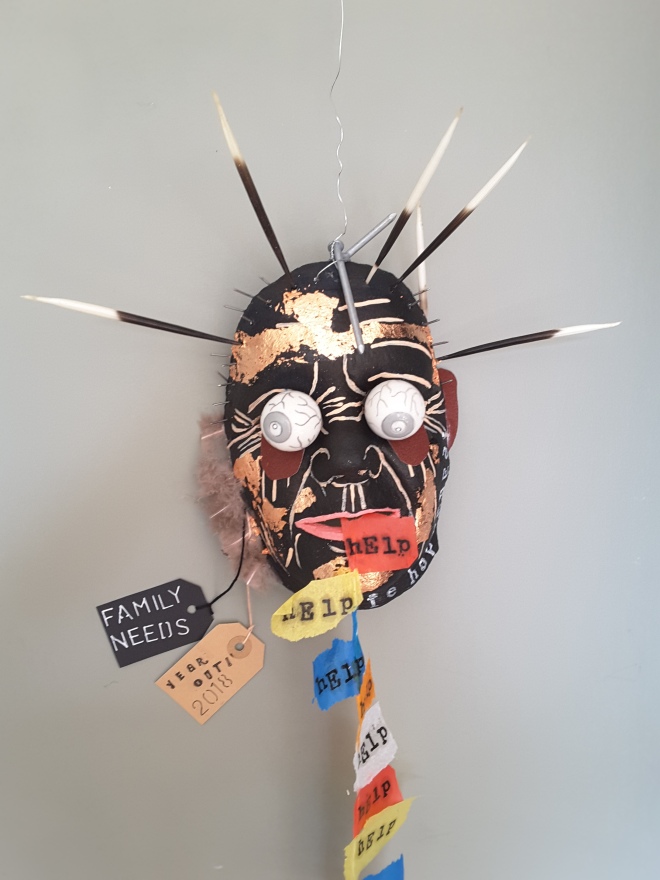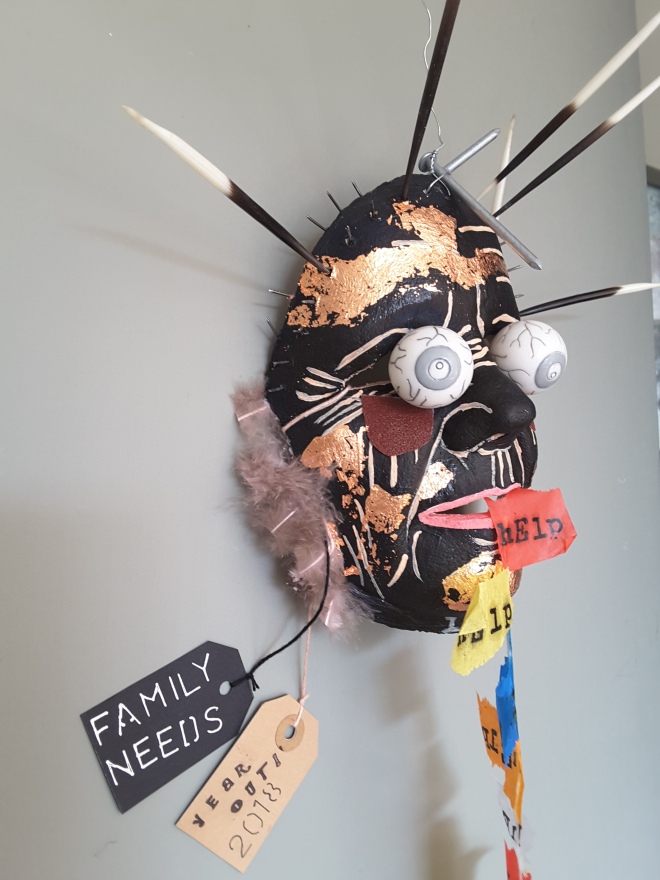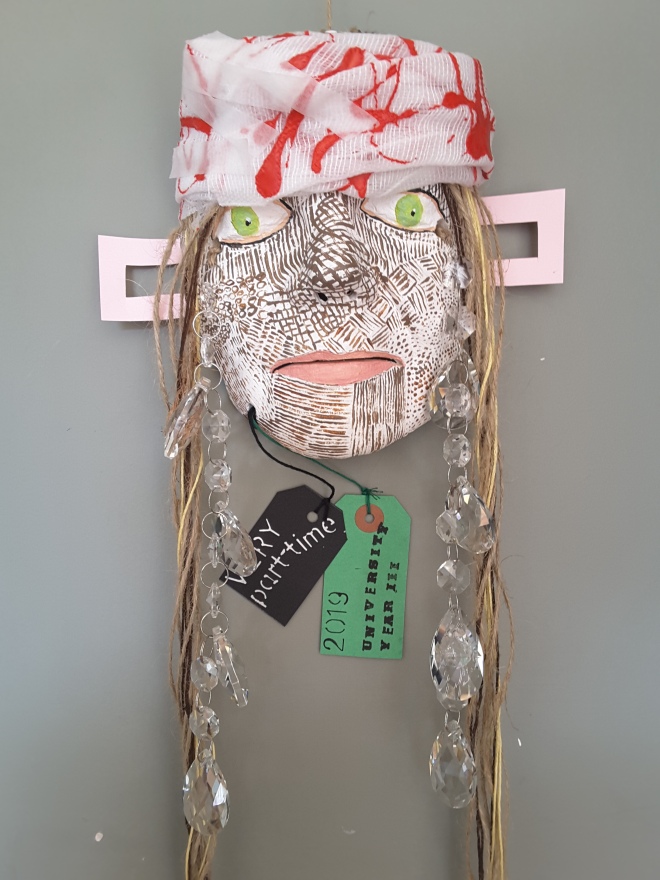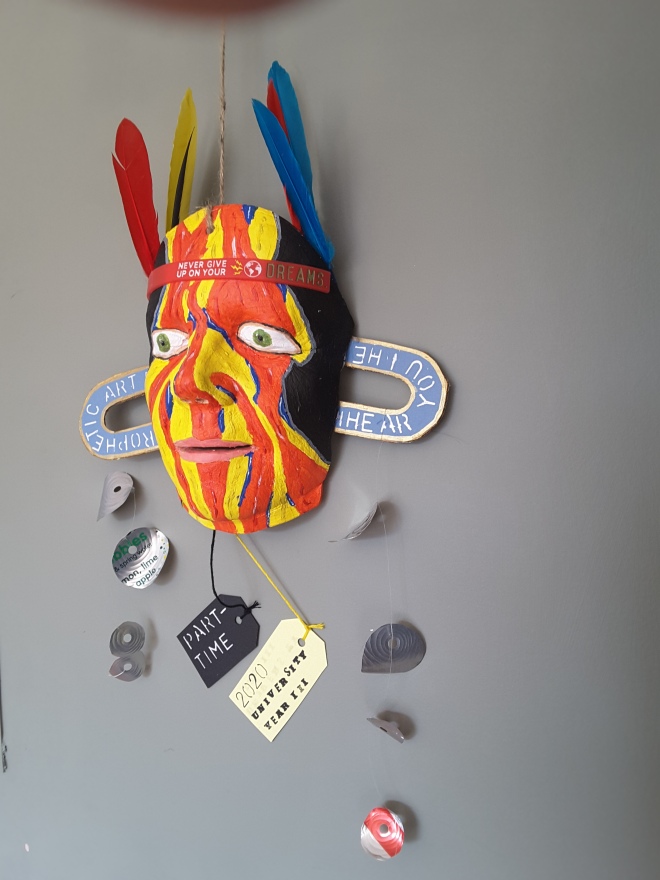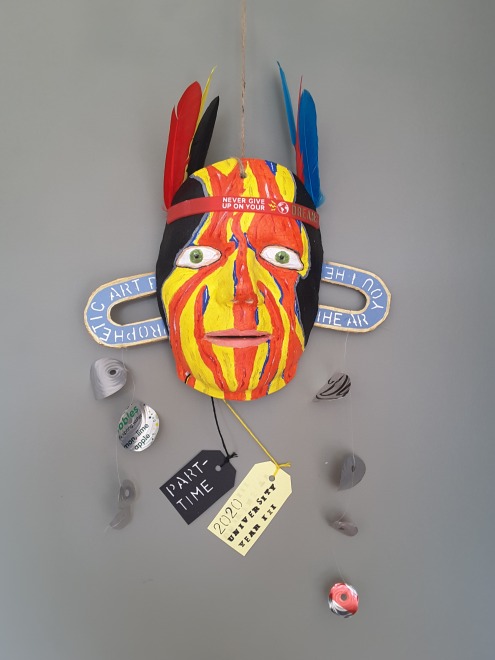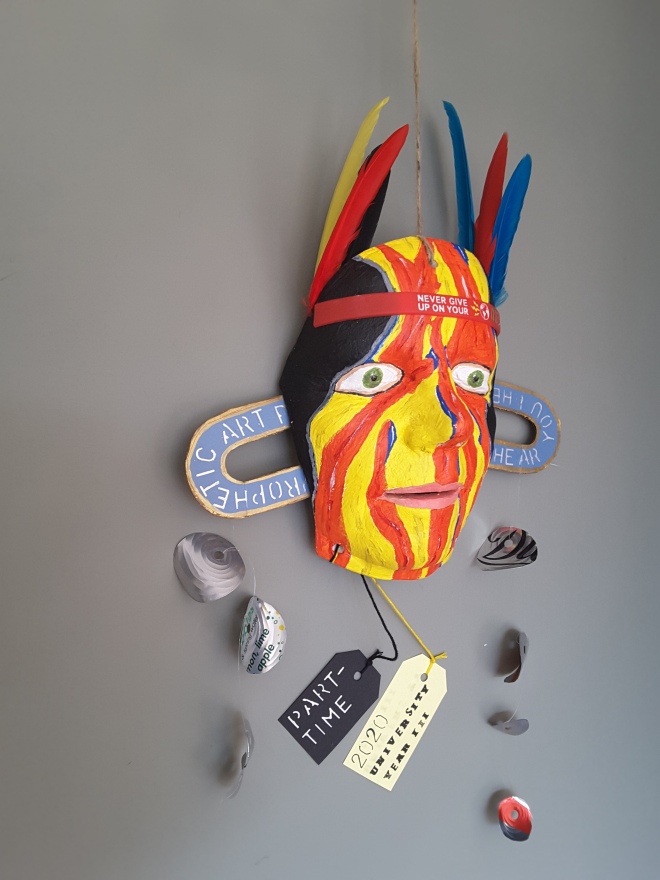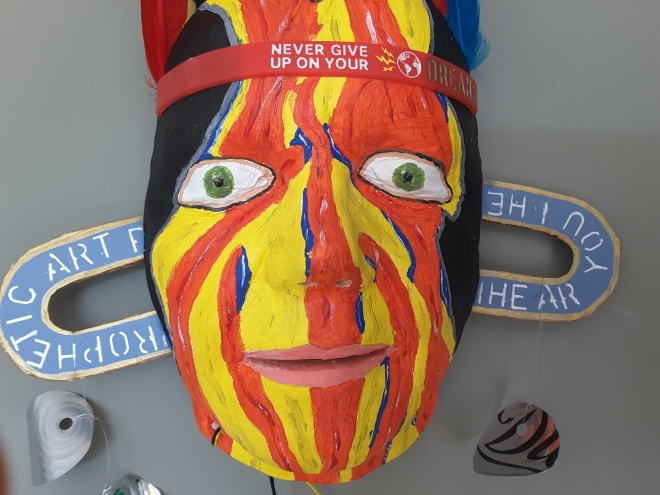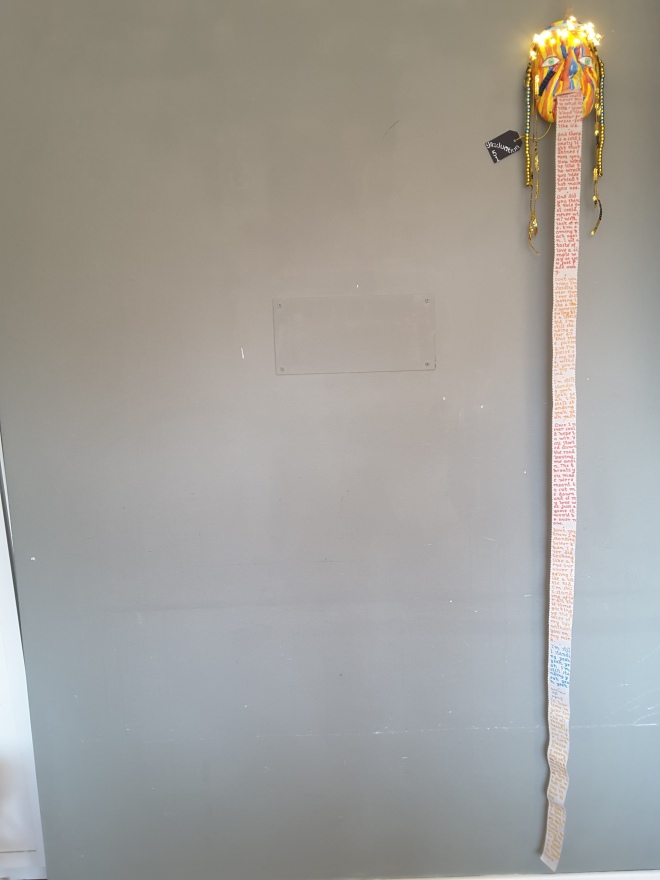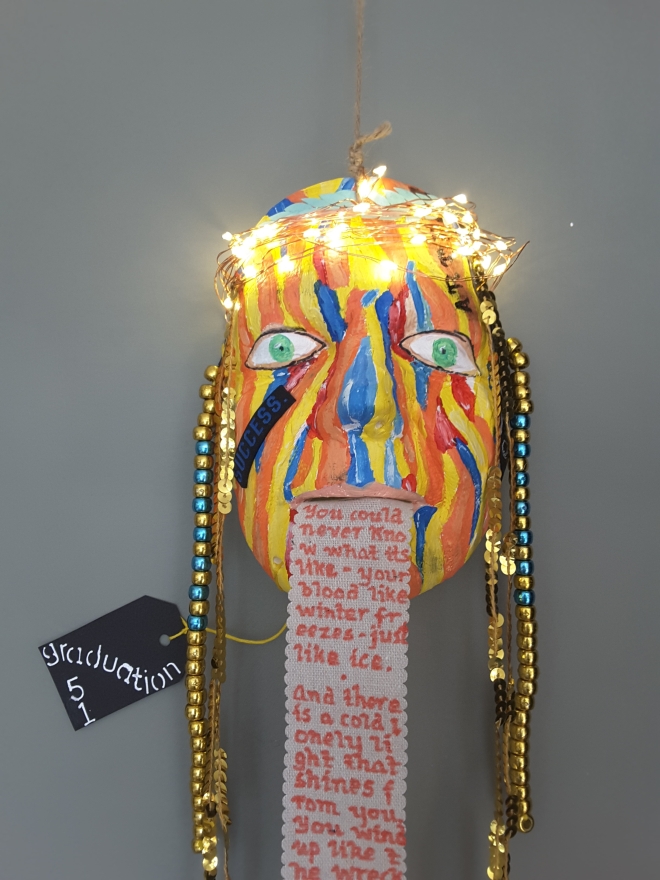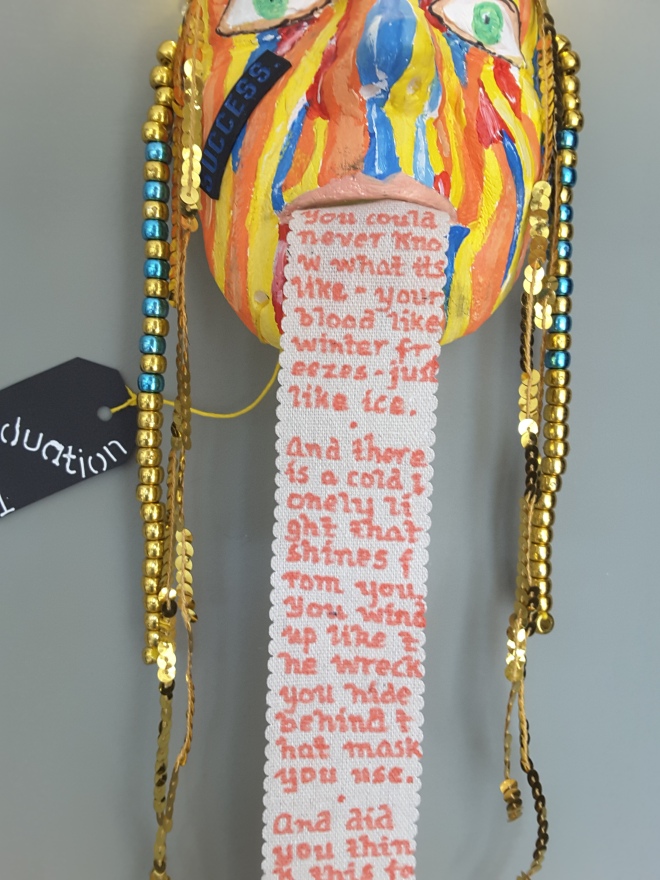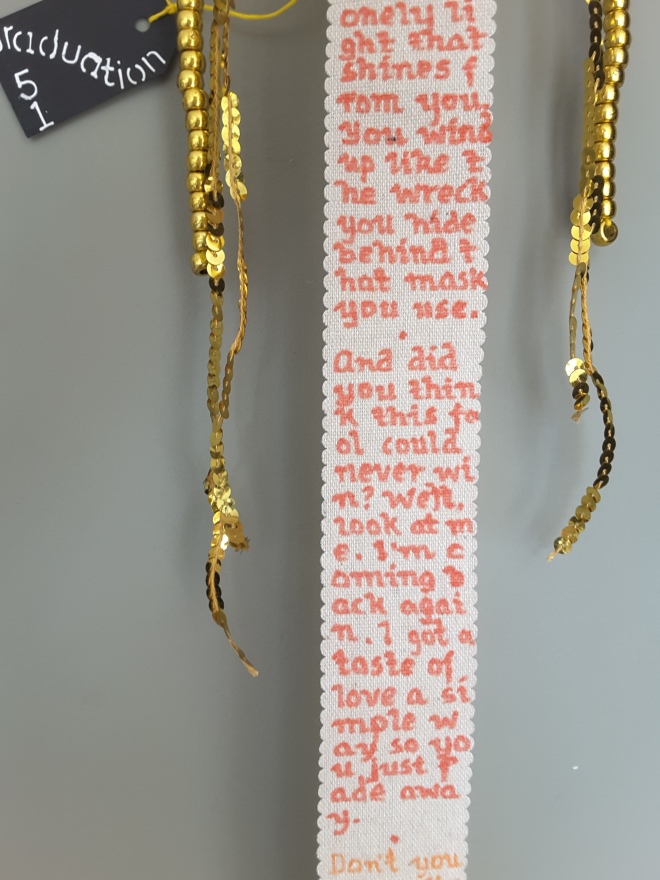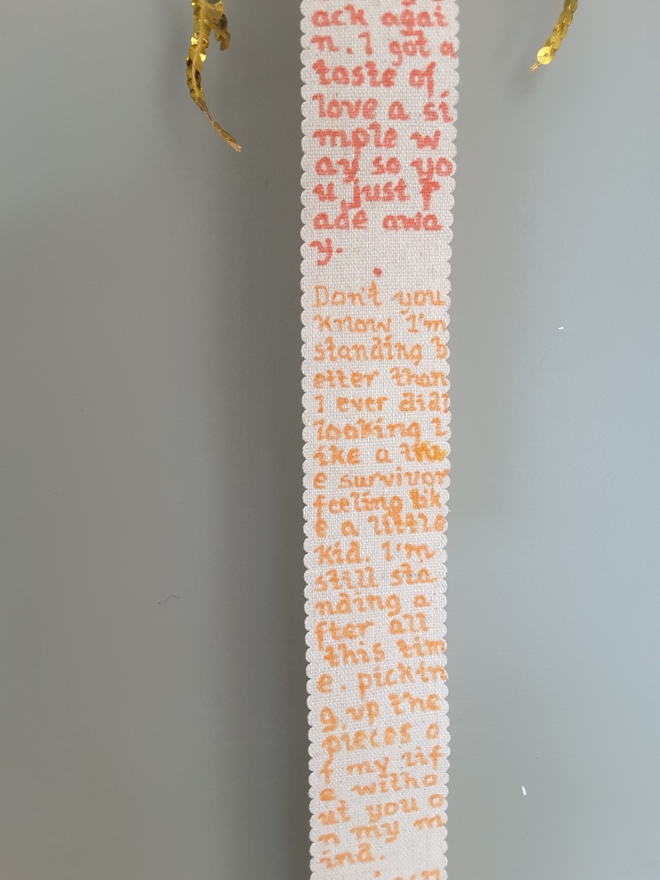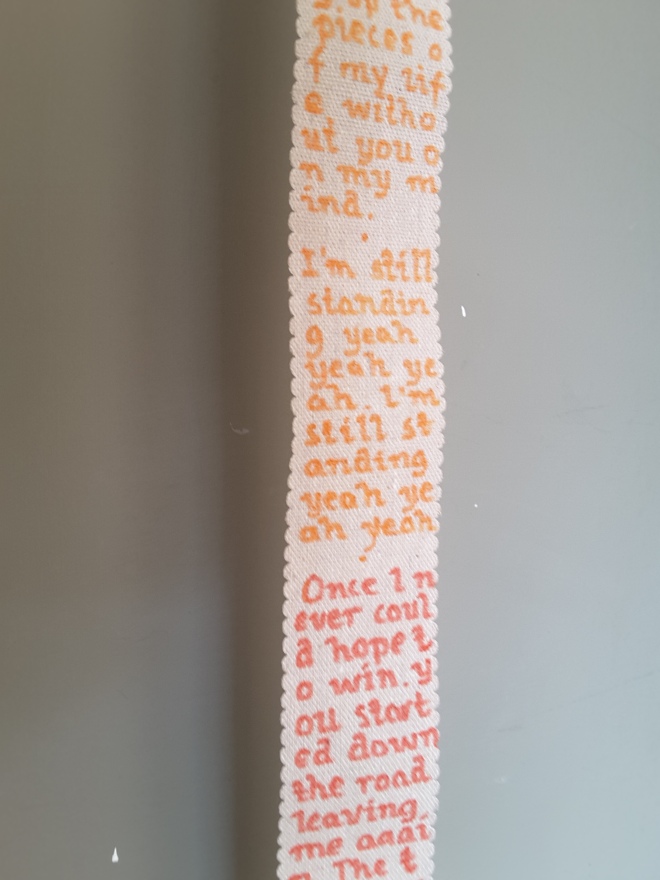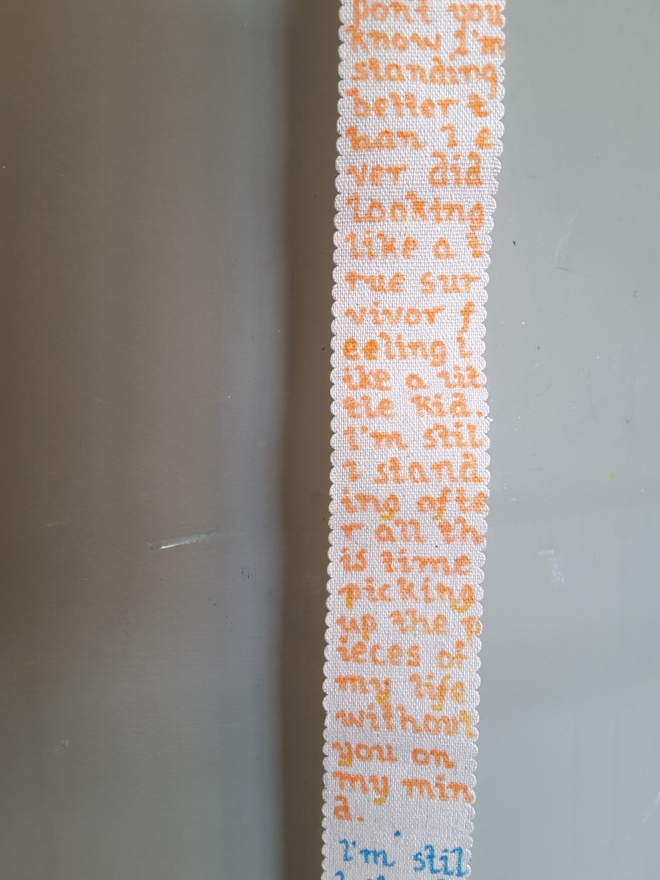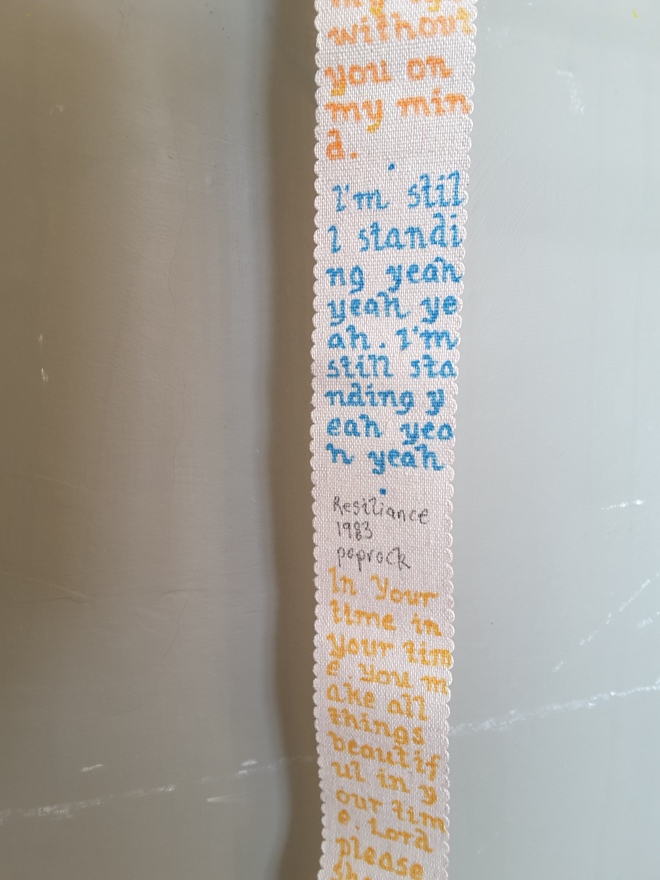In November 2019 I went to Pitt Rivers Museum in Oxford to take photos of the masks there as research for my dissertation. I took photos of about 100 different masks:8
 sample of photos I took at Pitt Rivers during November 2019 visit to Oxford
sample of photos I took at Pitt Rivers during November 2019 visit to Oxford
I like the way the items are displayed by type and not place or time so it is easy to look at everything on a particular item.
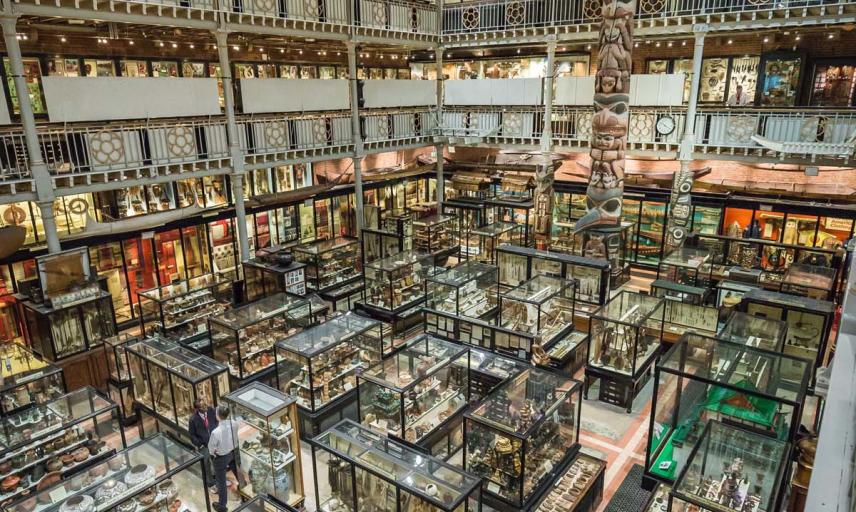 photo of my experience at Pitt Rivers where items are crammed into the museum space
photo of my experience at Pitt Rivers where items are crammed into the museum space
The inspiration from this visit is ongoing and has now spilled over into Exposure. I am currently making 6 masks as self-portraits or emotional 3D diaries, one mask for each year at university (2015-2020).
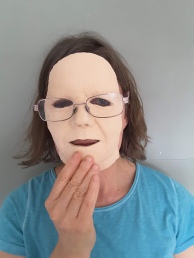 Ruth Newell poses with bisque fired mask January 2020
Ruth Newell poses with bisque fired mask January 2020
Pitt Rivers inspired me because I am interested in anthropology and archaeology. I previously studied social anthropology for three years at university. The collection of half a million items is brilliant and having travelled to various countries and lived in a few cultures myself I find the pieces easily speak to me. They are familiar yet nothing actually refers to my culture. I see myself as a global citizen. I appreciate the items because they come from around the world and from different times in history.
This experience at Pitt Rivers of the dense display of everything for me echoes the 1861 painting Grand Salon Carre in the Louvre by Giueseppe Castiglione.
 Artist Guiseppe Castiglione View of the Grand Salon Carre in the Louvre Museum oil on canvas 1861 800x519cm
Artist Guiseppe Castiglione View of the Grand Salon Carre in the Louvre Museum oil on canvas 1861 800x519cm
I hope I can fill my installation walls with a lot of work like these two examples. I want the installation to be a surprise for the viewer at every new art piece they encounter. I want the installation to be a unique experience for them, but thought provoking so the viewer thinks about it afterwards and wonders at the issues touched on through the piece as a whole.
In January 2020 I started to read about exhibiting in required reading and other books I found in the library related to exhibiting. The books I read and make notes on for my final exhibition ideas were
WHAT MAKES A GREAT EXHIBTION (the essay by Glenn Adamson) and
ENGAGING SPACES : Exhibition Design Explored (by Kossman; Dejong)
where I came across the idea of the pre-museum ‘wonder room’ in the 16th century. I started to plan and design an exhibition proposal around this idea. I feel inspired to draw my own wonder room, by re-imagining a wonder room exhibit today. I feel inspired to create a wonder room in my collage mural.

Fold-out engraving from Dell’Historia Naturale Ferrante (Naples 1599), the earliest illustration of a natural history cabinet
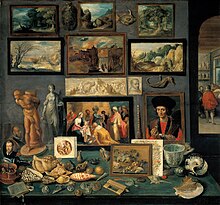 A corner of a cabinet, painted by Frans II Francken in 1636
A corner of a cabinet, painted by Frans II Francken in 1636

In “Musei Wormiani Historia”, the frontispiece from the Museum Wormianum depicting Ole Worm‘s cabinet of curiosities
I also read these two books about exhibition spaces and made helpful notes that I felt were relevant to my ideas and work:
FROM STUDIO AND CUBE (by Brian O’Doherty)
ART AND ARTIFACT (The museum as a medium) by James Putnam
In February a tutor told me about The Museum of Jurassic Technology in Los Angeles. The collection here belongs to art, science, ethnography and history. This reflects a ‘wonder room’ in many aspects, especially because it is captivating and interesting yet not referring to any one topic as such. The exhibits in the museum cross the line between fact and fiction, between reality and imagination which may relate to conceptual art that I make.
 Front of the museum in Culver City, Los Angeles
Front of the museum in Culver City, Los Angeles
My exhibition relates to this museum because I am also trying to answer a plethora of issues. I am touching on: exhibiting a studio with traces of the artist in it; the artist as a specimen; how the studio walls create the studio; how a female is exhibited in galleries and their body parts and the expectation of beauty; viewers becoming part of the art piece; mental illness and art therapy healing.
My installation piece is essentially trying to capture my university experience at Cardiff Met. I am presenting a personal experience as a university Fine Art student. As the viewer enters the space I have created, their shoes are removed to create a mood of awe, like entering a sacred place. By stepping into chalk and walking around the installation the viewer is collaborating with the artist (me) and making their own art on the only remaining blank canvas (the floor) without any intentional effort. This draws them closer to the artist as they view paintings, sculptural pieces, collages, mask pieces and hopefully if I have time a video piece and one or two books. All the pieces expose me, the artist in the studio space.
I am giving the viewer a look into the life of a student artist. It may be familiar to them or expected but it will be different in the sense that what matters here is not the quality of the art pieces but the points that are being made about the degree course, being an art student, a studio space, exhibiting as a female, mental health and recovery. A lot is going on conceptually and that is what this installation art piece is going to be all about!
POSTSCRIPT (SINCE LOCKDOWN)
I am going to do a visualisation of a virtual exhibition on ArtStep.com. In January 2019 I spent a day in the renovated Bath Spa for my birthday. I am inspired, for my online exhibition plan, by the different themed rooms in Thermae Bath Spa which relate to self care and well being. In the Wellness Suite at Bath Spa, I had six completely different experiences related to wellbeing : a Roman Steam Room, Georgian Steam Room, Infrared Room, Ice Chamber, Celestial Relaxation Room and Experience Showers.
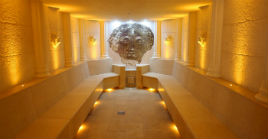 the Roman steam room in the Spa
the Roman steam room in the Spa
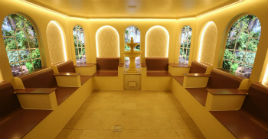 the Georgian steam room in the Spa
the Georgian steam room in the Spa
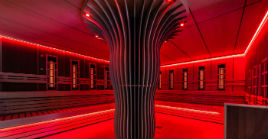 the infrared room in the Spa
the infrared room in the Spa
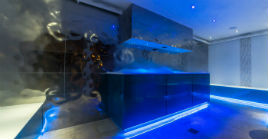 the ice chamber in the Spa
the ice chamber in the Spa
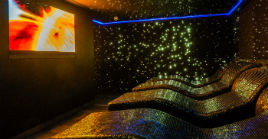 the relaxation room in the Spa
the relaxation room in the Spa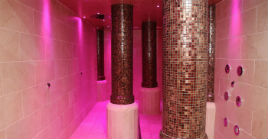 the experience showers in the Spa
the experience showers in the Spa
I think the different rooms in the Bath Spa really relate well to my virtual exhibition because I have explored many different concepts under the umbrella topic of the studio just as the different spa rooms come under the idea of a wellness suite. I am going to create different rooms like the Spa in my exhibition to organise my art pieces into bite size concepts. I hope this will create an interesting and simpler set-up where the outcomes (art work) of my exploration (into my studio space) will be enjoyable and fun for viewers, like my day at the Spa!
Some ideas I have for my exhibition now are: The Head Room (for masks and eye, ear, neck art pieces); The Body Room (for art work that explores pieces of the body); The Inspiration Room (for artwork about thinking and waiting in the studio); The Escape Room (for art work about creating a new atmosphere or mindset in the studio); The Experience Room (for art work about endurance, worry and hope in the studio); The Two Studios Room (for art work about managing two different studios). Awesome!
 photo of my experience at Pitt Rivers where items are crammed into the museum space
photo of my experience at Pitt Rivers where items are crammed into the museum space Ruth Newell poses with bisque fired mask January 2020
Ruth Newell poses with bisque fired mask January 2020 Artist Guiseppe Castiglione View of the Grand Salon Carre in the Louvre Museum oil on canvas 1861 800x519cm
Artist Guiseppe Castiglione View of the Grand Salon Carre in the Louvre Museum oil on canvas 1861 800x519cm
 A corner of a cabinet, painted by Frans II Francken in 1636
A corner of a cabinet, painted by Frans II Francken in 1636
 the Roman steam room in the Spa
the Roman steam room in the Spa the Georgian steam room in the Spa
the Georgian steam room in the Spa the infrared room in the Spa
the infrared room in the Spa the ice chamber in the Spa
the ice chamber in the Spa the relaxation room in the Spa
the relaxation room in the Spa the experience showers in the Spa
the experience showers in the Spa